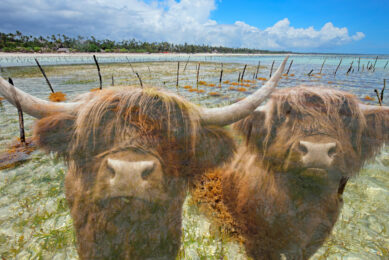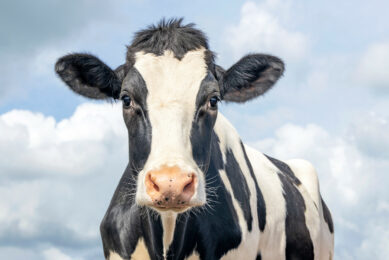Pine meal is suggested as an alternative to carotene feed additives

A group of researchers from Altai Krai, Russia, have proven the effectiveness of pine meal in feeding cattle, geese and chickens.
The scientists insist that pine meal, made of a mix of ground green mass of spruce, pine and fir, can become a valuable source of feed vitamins in animal diets.
“The pine meal is rich in carotene and sugar. It contains macro- and microelements such as calcium, phosphorus, iron, copper, and manganese,” the scientist said in a note to the study, emphasising that it could serve as a replacement for imported feed additives containing carotene.
Pine meal has a comprehensive mechanism of action in the animal body, namely antioxidant, hematopoietic, immunostimulating, antimicrobial, and anti-inflammatory, the researchers claimed.
[pine meal] can be used as a growth stimulant, increasing the productivity of animals and poultry while reducing feed costs per unit of production
According to the researchers
Dairy cattle – increase in mild yeild
The scientists disclosed that the inclusion of a pine meal in the diet of heifers 20 days before calving and first-calf heifers within 20 days after calving had not had any impact on postpartum complications and contributed to an increase in average daily milk yield by 7.7%, which secured production of additional 335 kg of milk from the experimental group.
Bulls – increase in sperm quality & volume
In addition, the inclusion of a pine meal in the diet of Simmental bulls in the amount of 0.5 kg/head per day had a positive effect on the quality of their sperm and blood counts. The researchers registered a rise in the number of ejaculates by 7.4%, ejaculate volume by 4.2%, sperm activity by 6.7%, and sperm concentration by 7.9%
No additional details on the studies have been provided.
Chicken – drop in mortality
The use of a pine meal in the diet of Plymouth rock chickens secured a 6% drop in mortality and led to an increase in the gross collection of eggs by 4.19%, egg production per initial laying hen by 4.10% and a 1.8% rise in the number of hatched chicks, the scientists said.
Geese – rise in egg production
In the diet of Lindovskaya geese, a local crossbreed, pine meal contributed to a 12.0% drop in mortality compared to a control group and secured a rise in the gross collection of hatching eggs, egg production per initial laying hen and the percentage of hatched chicks by 10.14%, 11.1% and 4, respectively, the scientists indicated.
Challenges – digestability
In some previous studies, Russian scientists indicated digestibility problems as the main factor preventing the commercial use of pine meal. They have not said anything about how they managed to overcome this issue or about plans to commence the industrial production of pine meal.
Join 26,000+ subscribers
Subscribe to our newsletter to stay updated about all the need-to-know content in the feed sector, three times a week. Beheer
Beheer











 WP Admin
WP Admin  Bewerk bericht
Bewerk bericht